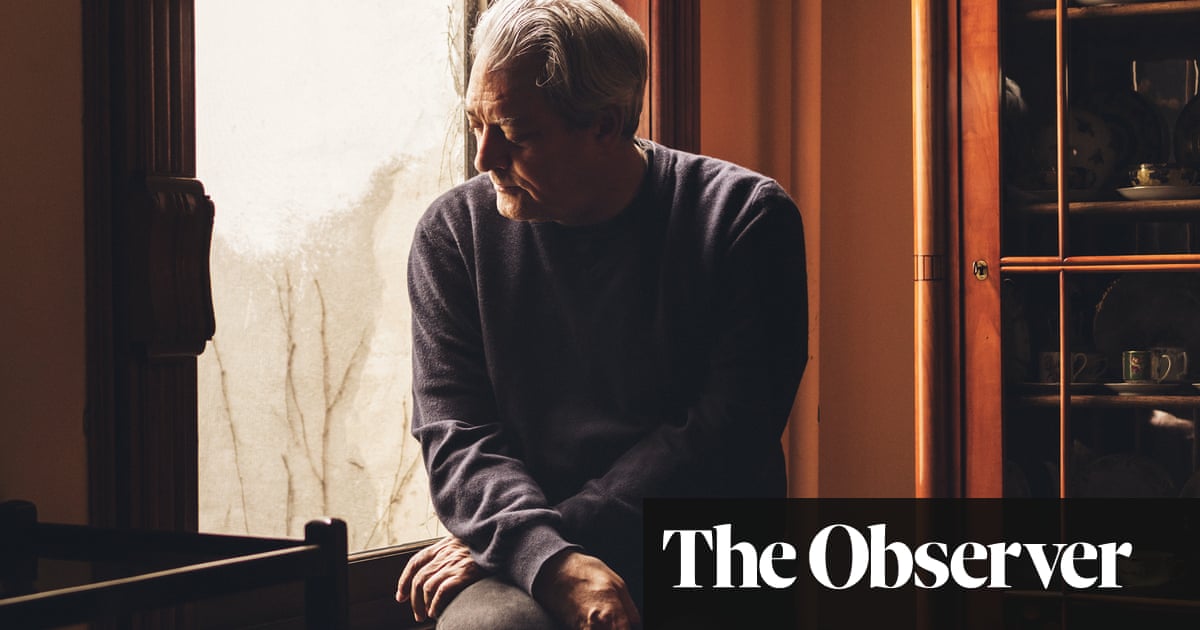Paul Auster: ‘The gun that killed my grandfather was the same gun that ruined my father’s life’
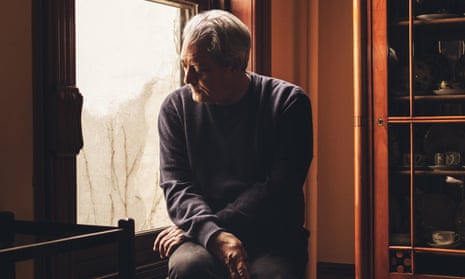
In this extract from his new book, Bloodbath Nation, the novelist details the chilling murder his family hid for five decades – and why fixing the US’s deadly relationship with firearms will take gut-wrenching honesty
I have never owned a gun. Not a real gun, in any case, but for two or three years after emerging from diapers, I walked around with a six-shooter dangling from my hip. I was a Texan, even though I lived in the suburbs outside Newark, New Jersey, for back in the early 50s the wild west was everywhere, and numberless legions of small American boys were proud owners of a cowboy hat and a cheap toy pistol tucked into an imitation leather holster. Occasionally, a roll of percussion caps would be inserted in front of the pistol’s hammer to imitate the sound of a real bullet going off whenever we aimed, fired, and eliminated one more bad guy from the world. Most of the time, however, it was sufficient merely to pull the trigger and shout: “Bang, bang, you’re dead!”
The source of these fantasies was television, a new phenomenon that began reaching large numbers of people precisely at the time of my birth (1947), and because my father happened to own an appliance store that peddled several brands of TVs, I have the distinction of being one of the first people anywhere in the world to have lived with a television set from the day I was born. Hopalong Cassidy and The Lone Ranger were the two shows I remember best, but the afternoon programming during my preschool years also featured a daily onslaught of B-westerns from the 30s and early 40s.
Quick Guide
About the photographs
Show
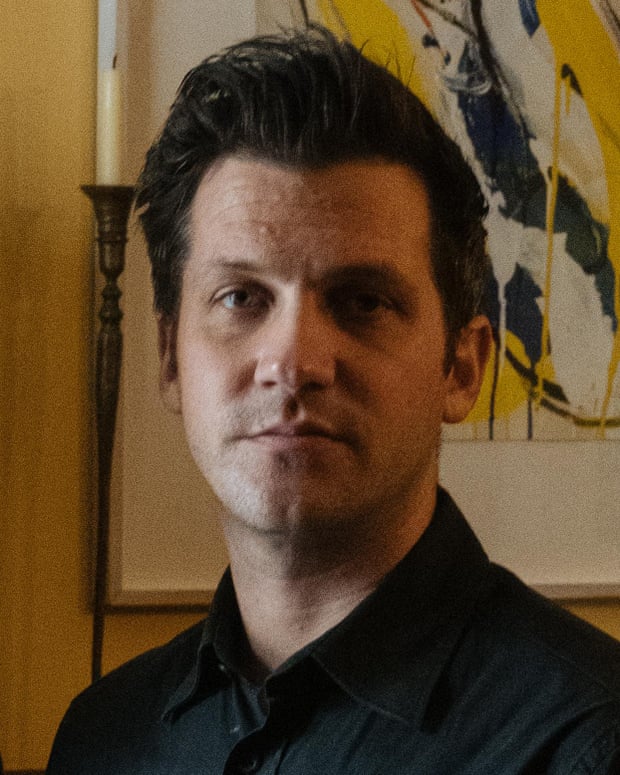
The black and white images accompanying this article – from the book Bloodbath Nation – were taken by Spencer Ostrander during a series of journeys across America to the sites of some of the mass shootings that have become horribly familiar headline news during the past two decades. Over the course of two years, in Paul Auster’s words, ‘he showed up with his camera and transformed these forgotten buildings into gravestones of our collective grief’.
Everyone carried a gun in those stories, both heroes and villains alike, but only the hero’s gun was an instrument of righteousness and justice, and because I did not imagine myself to be a villain but a hero, the toy six-shooter strapped to my waist was a sign of my own goodness and virtue, tangible proof of my idealistic, make-believe manhood. Without the gun, I wouldn’t have been a hero but a no one, a mere kid.

I longed to own a horse during those years, but not once did it occur to me to wish for a real weapon or even to fire one. When the chance finally came to do that, I was nine or 10 and had long outgrown my infantile dream world of television cowboys. That summer, my parents sent me to a sleepaway camp in New Hampshire, where in addition to baseball there was swimming, canoeing, tennis, archery, horseback riding, and a couple of sessions a week at the shooting range, where I first experienced the pleasures of learning how to handle a 22 caliber rifle and pumping bullets into a paper target affixed to a wall some 25 or 50 yards away. I have vivid memories of being taught how to position my hands when holding the rifle, how to line up the target along the sight at the end of the barrel, how to breathe properly when preparing to shoot, and how to pull back the trigger in a slow, smooth motion to send the bullet surging through the barrel into the air. My eyesight was sharp back then, and I caught on quickly. More than 60 years later, I still remember how good it felt to fire a shot clear into the bullseye.
The next chance I had to fire a gun came when I was 14 or 15. One of my closest friends during those years came from a wealthy family and one Saturday or Sunday in mid-November I was invited out to his father’s farm in Sussex County. Most of that visit is lost to me now, but what stands out and has never been forgotten is the hour or two we spent skeet shooting in that chilly rural landscape of bare branches and swooping, clamouring crows. Not a 22 rifle this time but a double-barrelled shotgun, and the target was a round black disc called a clay pigeon that was launched from a device on the ground and sent flying upward, and as I took aim at the black thing streaking across the grey-white sky, I knew that I had to act quickly or the disc would fall to the ground before I had a chance to fire. Oddly enough, it didn’t feel difficult to me. My first shot was a direct hit. The clay disc burst apart in midair and fell to the ground in tiny fragments, and then, moments later, when the second clay pigeon was launched, I did it again with my next shot. For the rest of the afternoon, I didn’t miss once.
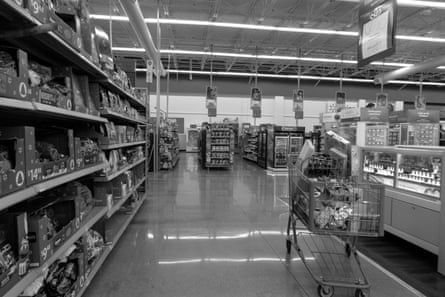
Given how naturally I had taken to this new sport, I find it somewhat mystifying that I didn’t go any further with it. But for all the enjoyment I had felt that day on the farm, I simply let the matter drop.
For want of any other explanation, I suspect that my indifference to guns came from the fact that nothing in my background had disposed me to care about them. Neither my father nor my mother nor anyone else in our extended family owned a firearm. The same held true for all my friends and their families, and even though stories about gangland murders filled the newspapers of the 1950s, I don’t recall a single instance when a person in my town brought up the subject of guns.
Millions of big screens and small screens from one end of America to the other were awash in images of gun violence. I enjoyed that mayhem as much as anyone else, but for all the scenes I watched of shootouts, ambushes, and men writhing on the ground with mortal wounds, they had little effect on me. The guns were merely props in carefully staged cinematic productions, and the blood that spilled from the wounded men was red paint or, in the case of movies and shows filmed in black-and-white, Hershey’s chocolate syrup.
Had I come from a different background, there is every chance I would have embraced guns as an integral part of my life. Such is the case for tens of millions of Americans across the country, and if I had been encouraged by my father to take up shooting as one of the fundamental imperatives of manhood, a boy with my innate marksmanship talents surely would have followed his example with enthusiasm. But my father was not one of those men, and therefore I was not one of those boys. More than that, there was something I didn’t know, an essential something that lay buried in the ground throughout my childhood and into my early 20s, but once that thing was pulled up into the light, I finally understood how much my father must have abhorred guns and how badly his life had been scarred by the brutality of guns when real bullets are fired into a real human body.
From the beginning of my conscious life, I had always known that my paternal grandfather had died when my father was a young boy. As I remember it, at three different times in my early childhood, I asked my father how his own father had died. There was always a pause before he answered, and each time he gave me a different story. The first time I asked, he said that his father had been repairing the roof of a tall building and had died when he slipped off the edge and fell to the ground. The second time, that he had been killed in a hunting accident. The third time, that he had been killed as a soldier in the first world war. I never challenged my father to explain the contradictions in his stories. I had already learned to respect the distance between us and to stand obediently on the other side of the wall he had built around himself.
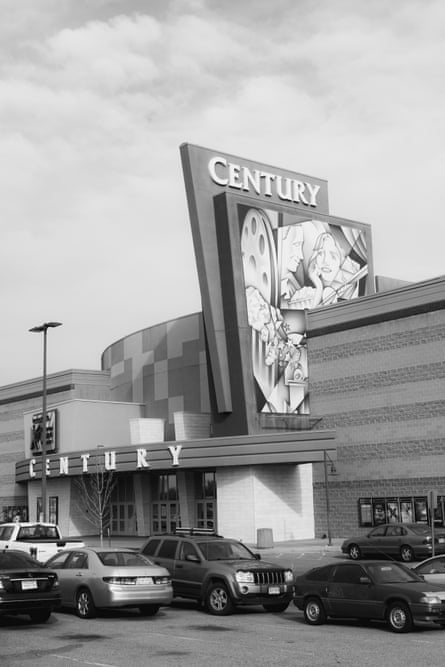
As the third youngest of nine first cousins, I eventually asked four or five of the oldest ones if they had ever been told anything about our grandfather’s death, and one by one they all said that they had received the same sorts of evasive answers to their questions that I had. Years passed with no progress on any front, and then, through a wholly improbable trick of chance, one of those older cousins happened to find herself sitting next to a stranger on a transatlantic flight in 1970, and that man, who had grown up and still lived in Kenosha, Wisconsin, the same small city where our fathers had lived with their parents, uncovered the secret that had been hidden for the past five decades.
The truth comes down to this: on 23 January 1919, two months after the end of the first world war, my grandmother shot and killed my grandfather. Their marriage had broken up and my grandfather had moved to Chicago, where he was now living with another woman. But he came back to his former home that Thursday evening in 1919 to give presents to his children, and while he was there, my grandmother asked him to repair a faulty light switch in the kitchen. The electricity was turned off, and as the second youngest Auster son held a candle for him in the darkened room, my grandmother went upstairs to tuck in her youngest for the night (my father) and to retrieve the pistol she kept hidden under the little boy’s bed, whereupon she went back downstairs, re-entered the kitchen, and fired several shots at her estranged husband, two of which entered his body, one in the hip and the other in the neck, which must have been the one that killed him. My father was six and a half, and my uncle, the boy holding the candle who had witnessed the murder, was nine.
There was a trial, of course, and after my grandmother was unexpectedly acquitted on the grounds of temporary insanity, she and her five children left Wisconsin and headed east, eventually landing in Newark, New Jersey, where my father grew up in a wrecked family presided over by a hotheaded, often unhinged matriarch who trained her children never to breathe a word among themselves or to anyone else about what had happened in Kenosha. Resources were pinched, day-to-day life was a struggle, and even though all four boys had after-school jobs, coming up with the rent was often a problem, which meant that they moved several times a year to escape angry landlords, which in turn meant that the boys kept changing schools as they bounced from one neighbourhood to another. So many friendships interrupted, so many potential bonds broken, until all they could count on in the end was one another.
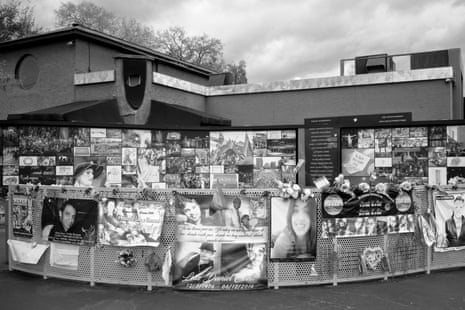
The gun had caused all this, and not only did the children have no father, they lived with the knowledge that their mother had killed him.
The three oldest children, who had been mostly formed by the time of the murder, had an easier time adjusting to their new reality than the two youngest ones. The boy who witnessed the murder grew up into a successful but haunted man given to savage bursts of rage and violent tantrums. As for my largely subdued father, he worked hard at transforming his radio repair shop into a full-fledged appliance business and remained a bachelor who lived at home with his mother until he was 33. In 1946, he married my 21-year-old mother, a woman he supposedly worshipped but could not love, for by then he was a lonely, fractured man who lived at a remove from himself and others, which made him unqualified for marriage, and so my parents eventually divorced, and whenever I think about the essential goodness of my father and what he could have become if he had grown up under different circumstances, I also think about the gun that killed my grandfather – which was the same gun that ruined my father’s life.
Americans are 25 times more likely to be shot than their counterparts in other wealthy, so-called advanced countries, and 82% of all gun deaths in the world take place in the US. The difference is so large, so striking, so disproportionate to what goes on elsewhere, that one must ask why. Why is America so different – and what makes it the most violent country in the western world?
According to a recent estimate by the Children’s Hospital of Philadelphia Research Institute, there are 393m guns currently owned by residents of the US – more than one firearm for every man, woman, and child in the country. Each year, approximately 40,000 Americans are killed by gunshot wounds. Of those 40,000 gun fatalities, more than half are suicides, which in turn account for half of all suicides per year. Add in the murders caused by guns, the accidental deaths caused by guns, the law enforcement killings caused by guns, and the average comes out to more than 100 Americans killed by bullets every day. On that same average day, another 200-plus are wounded by guns, which translates into 80,000 a year.
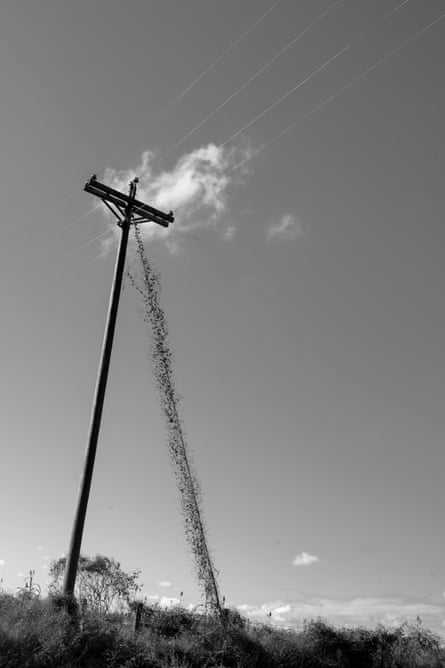
But the toll of gun violence goes far beyond the pierced and bloodied bodies of the victims themselves, spilling out into the devastations visited upon their immediate families, their extended families, their friends, their fellow workers, their schools, their churches, their softball teams, and communities at large – the vast brigade of lives touched by the presence of a single person who lives or has lived among them – meaning that the number of Americans directly or indirectly marked by gun violence every year must be tallied in the millions.
Bloodshed and death on this scale and at this level of frequency would seem to call for national action, a concerted effort on the part of state, federal, and municipal governments to control what by any measure of rational understanding is a public health crisis. America’s relationship to guns is anything but rational, however, and therefore we have done little or nothing to fix the problem. It’s not that we lack the intelligence or the wherewithal to relieve this threat to society, but for complex historical reasons, we have lacked the will to do so, and so obdurate have we become in our refusal to address the problem that in 1996 the Centers for Disease Control and Prevention was barred by Congress from using federal funds to conduct research that “may be used to advocate or promote gun control”. By contrast, consider the progress we have made with the cars we drive and how conscientiously we have pushed down the death and injury rates caused by automobile accidents over the years.
There are still an appalling number of traffic deaths in America every year, but compared with the dizzying smash-up rates of the 1920s, 30s and 40s the percentage of accidents per total miles driven by more than 300 million Americans in close to 300m registered vehicles, the numbers have in fact been vastly reduced. Which raises the question: if we could face up to the dangers represented by cars and use our brains and sense of common purpose to combat them, why haven’t we been able to do the same thing with guns?
Cars are a necessity of civilian life in America. Guns are not, and as more and more Americans have come to understand that, the percentage of households that own guns has been dropping steadily over the past 50 years, from half of them to just below a third, and yet the number of guns currently owned by Americans is larger than ever before – which means that fewer and fewer people are buying more and more guns.
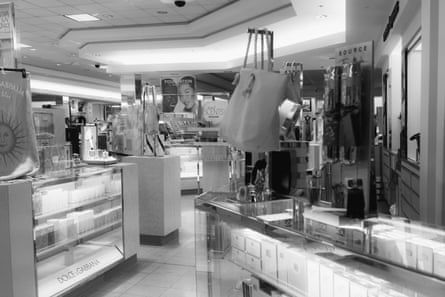
How to account for this great difference, and why at this moment in our history have Americans been pulling farther and farther apart on the subject of guns, leading to a situation in which most of us want little or nothing to do with them and some of us have fetishised them into emblems of American freedom, an essential human right granted to all citizens by the framers of the constitution?
The logical next step would be for me to start talking about the growth of the National Rifle Association, the second amendment – the right of the people to keep and bear arms – the gun-control movement, and the various positions advanced by partisans on both sides of the issue, but all those arguments are numbingly familiar to us by now, and beyond and above that, the immense problem we are facing as a country is not likely to be solved by enacting new laws or pushing innovative safety measures through Congress. Piecemeal legislation might help mitigate some of the damage, but it will never go to the heart of the problem, and I can’t imagine that we would fare any better by looking beyond Congress to the courts as the final arbiter on what to do and what not to do. One side will win, the other side will lose, and at the same moment the winners are exulting in their victory, the losers will cry out in anger that a gross injustice has been committed, and we will be right back where we are now.
Ultimately, peace will break out only when both sides want it, and in order for that to happen, Americans would first have to conduct an honest, gut-wrenching examination of who we are and who we want to be as a people in the future, which necessarily would have to begin with an honest, gut-wrenching examination of who we have been in the past. Are we ready for this long deferred national moment of truth and reconciliation? Perhaps not today. But if not today, when?

Meanwhile, gun violence has risen sharply since the outbreak of the pandemic, saturating the American troposphere with a dense profusion of newly minted bullets. The recently published 2020 numbers show that homicides have increased by 30% over 2019 in nearly all of the three dozen largest cities in the country, and the statistics for the first half of 2021 are even more dire. In my own city of New York, shootings have gone up by 73% from last May to this May, and the legal sales of guns are so strong that manufacturers can barely keep pace with the demand, even as black-market trafficking in illegal guns continues to proliferate.
In the meantime, I am thinking about how George Floyd’s murderer from the Minneapolis police department has been sent to prison for 22 years, largely thanks to the steady hand and clear eye of Darnella Frazier, a brave 17-year-old girl who filmed the entire eight and a half minutes of that cold-blooded, senseless killing for everyone in America and the rest of the world to see. The demonstrations following Floyd’s murder were the one sign of hope I felt for our collective wellbeing during the dark, early days of the pandemic as large biracial crowds marched together in more than 2,000 towns and cities across the country, but whether those displays of black-white unity mark a genuine shift in the American climate or nothing more than a temporary break in the clouds is not yet certain.
I am also thinking about the small city in Wisconsin where my grandmother shot and killed my grandfather 102 years ago and how in that same Kenosha in August 2020, as a crowd of demonstrators was rallying in support of Jacob Blake, an unarmed black man who had been left paralysed after a white police officer fired seven bullets into his back, a 17-year-old boy arrived on the scene armed with a semi-automatic rifle and shot and killed two protesters and wounded another, premeditated crimes that the now former president, Donald Trump, condoned as acts of “self-defence”. Then I turn my thoughts back to the 17-year-old girl with her cell phone in Minneapolis and ask myself whether the future belongs to her or to the 17-year-old boy with the rifle in Kenosha or whether the world will still be the same world it is now and the future will belong to both of them.
-
This is an edited extract from Bloodbath Nation by Paul Auster, with photographs by Spencer Ostrander (Faber, £25). To support the Guardian and Observer order your copy at guardianbookshop.com. Delivery charges may apply
